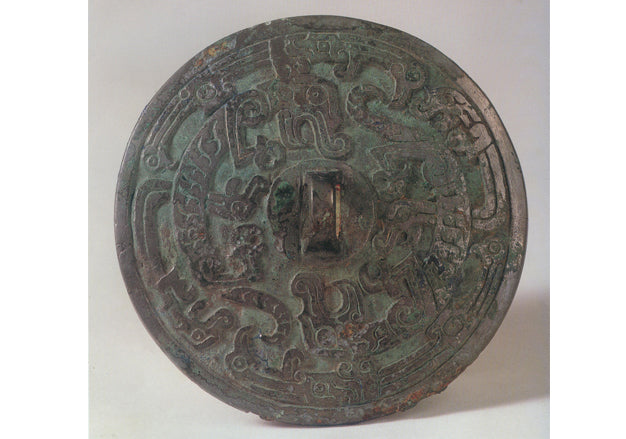
Tiger and bird pattern Yang Sui

Yangsui with tiger and bird patterns, early Spring and Autumn period, 7.5 cm in diameter. In 1956, M1052, the tomb of the Prince of Guo State, was unearthed from the Guo State Cemetery in Sanmenxia City, Henan Province. Now in the National Museum of China.
In the winter of 1956, the Yellow River Reservoir Archaeological Team conducted large-scale archaeological surveys and excavations in the Sanmenxia Reservoir area. They discovered the cemetery of the nobles of the Guo Kingdom at the Shangcunling Lakeside Station site and excavated a tomb of a prince of the Guo Kingdom [1], numbered M1052. , more than 970 cultural relics of various types were unearthed (Figure 1), including this Yangsui with tiger and bird patterns.
Figure 1 Bottom plan of M1052 Prince’s Tomb
When this Yangsui piece was unearthed, it was located on the west side of the tomb, close to the coffin wall. It is 7.5 centimeters in diameter and is very beautifully cast. The front is silvery white and has a concave arc shape. Although there are some rust marks, it is still very smooth. There is a high nose button on the back, which can be worn as a belt. Beside the button are two colorful tigers connected head to tail, a two-headed jackal dragon and a bird of prey. The tiger's mouth was open wide, its tail was curled up, and it seemed to be making a low and powerful roar. The dragon is tumbling and coiling around the body of the tiger; the bird of prey is glaring with anger, spreading its wings and flying to peck; the picture is ingeniously conceived, the shape is vivid, the meaning is profound, and the exquisiteness of the creation is amazing, showing the exquisite skills of the craftsmen at that time (Figure 2).
Figure 2 Pattern on the back of Yangsui
However, no one could figure out its purpose, so they had to call it a curved device based on its shape. The artifact was later transferred to the National Museum. In the 1990s, Mr. Xu Yongsheng, an archaeologist in Sanmenxia City, concluded through historical data research and comparison with physical objects that this curved-shaped vessel was the Yangsui, a tool used by the ancients to focus on sunlight to make fire. So, under his guidance, the Guo Culture Research Institute copied one piece as it was. After grinding, polishing and other technical treatments, they tried it under the sun. Sure enough, the cotton wool could ignite in just a few seconds (pictured) 3).

Figure 3 Yang Sui makes fire
The prince of the Guo Kingdom is the future king, and his status determines that he can serve as the chief sacrifice during sacrifices. This exquisite Yangsui may be the tool used by the prince to collect "sky fire".


![8.3"China Shang Dynasty,Bronze wine cup [Fuhao Jue cup][妇好爵杯]](http://bronzc.com/cdn/shop/files/4ee0482982cfa89bb4d1cff3333a55e6_e3ca0b86-22fc-497d-9afd-578c551225a3-2.jpg?v=1733986652&width=533)

![12.8" China Ming Dynasty, Phoenix-patterned bronze vase[Ming Wanli Phoenix-patterned vase][明万历凤纹瓶]](http://bronzc.com/cdn/shop/files/4ee0482982cfa89bb4d1cff3333a55e6_a516991b-2bb9-4b2f-a2b6-4354129d006c.jpg?v=1733986953&width=533)

![14.6" China Eastern Han Dynasty Bronze vessel in the shape of a flying horse,Also known as bronze galloping horse[Horse Stepping on Flying Swallow][马踏飞燕]](http://bronzc.com/cdn/shop/files/4ee0482982cfa89bb4d1cff3333a55e6_aa3fbeb8-e08b-4a44-929a-13411ca8fb17-2.jpg?v=1733987211&width=533)

![5.9"China Tang Dynasty, Bronze of a walking dragon[Tang Walking Dragon][唐走龙]](http://bronzc.com/cdn/shop/files/2_8cb416b9-ebbd-4fe2-a905-b9277f820c16.png?v=1731488701&width=533)
